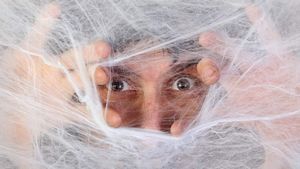California condors have taken the phrase single parenting to new heights.
Scientists at the San Diego Zoo Wildlife Alliance have found that two California condors, a critically endangered species, gave birth without any male genetic DNA present, according to a press release. Researchers now wonder how many other bird species can reproduce in such a way.
The discovery of the virgin births was made during a routine check as part of the zoo's breeding program -- part of a conservation effort that began in the late 1980s when the California candor population dropped to 23 worldwide. While the candor chicks had a genetic link to a female condor, there was no such link to a male. The zoo said it was the first time two instances of asexual reproduction -- or parthenogenesis -- has been confirmed in the birds. It was also the first time such virgin births were seen in birds that had access to male birds since the female birds were housed with males.
While condors can live to be 60, the birds born from parthenogenesis had much shorter lifespans. One chick from the virgin births died in 2003 at 2 and the other in 2017 at 8.
Researchers published their findings in the Journal of Heredity.
"This is truly an amazing discovery," said Oliver Ryder, San Diego Zoo Wildlife Alliance's director of conservation genetics. Ryder is co-author of the study. "We were not exactly looking for evidence of parthenogenesis, it just hit us in the face. We only confirmed it because of the normal genetic studies we do to prove parentage. Our results showed that both eggs possessed the expected male ZZ sex chromosomes, but all markers were only inherited from their dams [female condors], verifying our findings."
The female condors found to have produced asexually had also reproduced with males previously, and even after having the virgin births, according to the study. Often, parthenogenesis has been seen in birds -- specifically turkeys and chickens -- when female birds were separated from potential male mates.
"We believe that our findings represent the first instance of facultative avian parthenogenesis in a wild bird species, where both a male and a female are housed together," said Cynthia Steiner, another co-author of the study and the associate director for the conservation research division at San Diego Zoo Wildlife Alliance. "Still, unlike other examples of avian parthenogenesis, these two occurrences are not explained by the absence of a suitable male."
"These findings now raise questions about whether this might occur undetected in other species," Ryder said.





































































Charlie Kirk DID say stoning gay people was the 'perfect law' — and these other heinous quotes